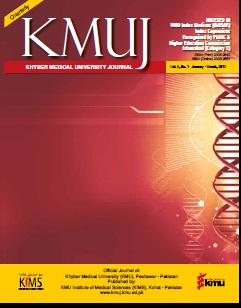PROBLEM BASED LEARNING (PBL) AND INSTITUTIONS’ RESPONSIBILITIES
Main Article Content
Abstract
The deficiencies perceived in traditionalmethods of teaching and learning have led to moves to develop and implement more effective methods appropriate to a given situation.1 One such method is problem-based learning (PBL), which is more active and participatoryin nature.2PBL is an innovative instructional strategy was first introduced at McMaster University, Canada in 1969 as an instructionalmedium and since then slowly and gradually is adapted by most of the institution around the world. PBL philosophyis congruent with modern principles of learning. It encourages self directed learning, addresses many theories of learning like information processing theory, collaborative and social learning theory. It discourages memorization and build up critical thinking and problem solving skills in learners.3 It not only helps students to construct their knowledge but also fosters attitudes and ethics, researchskills and attributes prerequisite of team work and leadership.4,5There are conflicting results of literaturereviews about the performance of students of two curricula but general conclusion is that there is no difference in term of knowledge acquisition but studentsof PBL group have demonstrated better clinical performance and knowledgeapplication skills6 which denotes that although there are many benefits of PBL but expectation should not be kept very high.The philosophy of PBL does not believe in spoon feeding or information relay from the tutor rather tutor is expectedto act as facilitator. Function of the PBL tutor is to raise students’ levels of thinking to a cognitive or higher cognitive level.7 In PBL real life scenario with structuredlearning objectives is introduced to the students. Tutor job is to monitor the process of knowledge construction by the students and to keep the students on their learning track by encouraging brain storming, reflective questioning and not by letting out the information to achieve those learning objectives.
Article Details
Work published in KMUJ is licensed under a
Creative Commons Attribution 4.0 License
Authors are permitted and encouraged to post their work online (e.g., in institutional repositories or on their website) prior to and during the submission process, as it can lead to productive exchanges, as well as earlier and greater citation of published work.
(e.g., in institutional repositories or on their website) prior to and during the submission process, as it can lead to productive exchanges, as well as earlier and greater citation of published work.
References
Salehi Sh. Educational stewardship. Nursing
Midwif J 1999: 31-7.
Vahidi RG. Azamian A. Valizadeh S. Short communication; Opinions of an Iranian nursing faculty on barriers to implementing problem-based learning. Eastern Mediterran
Health J 2007; 13(1): 193.
Tiwari A, Lai P, So M, Yuen K. A comparison
of the effects of problem-based learning and lecturing on the development of students’ critical thinking. Medical Education
; 40: 547-54.
Hmelo-Silver CE. Problem-Based Learning:
What and How Do Students Learn? Educational Psychol Review 2004; 16(3): 235-65.
Hirca N. Impact of problem-based learning
to students and teachers. Asia-Pacific Forum Sci Learning Teaching 2011; 12(1): 1-19.
Colliver JA. Effectiveness of problem-
based learning curricula: Research and theory. Acad Med 2000; 75(3): 259-66.
Barrows HS. The Tutorial Process, 2nd edi. Springfield, Illinois: Southern Illinois University School of Medicine 1988.
Gilkison A. Techniques used by ‘expert’ and ‘non-expert’ tutors to facilitate problem-based learning tutorials in an undergraduate
medical curriculum. Medical Education 2003; 37: 6-14.
Wells SH, Warelow PJ, Jackson KL. Problem based learning (PBL): A conundrum.
Contemporary Nurse 2009; 33(2): 191-201.
Azer S. Challenges facing. PBL tutors: 12 tips for successful group facilitation. Medical
Teacher 2005; 2(8): 676-81.
Maudsley G. Roles and responsibilities of the problem based learning tutor in the undergraduate medical curriculum. Br Med J 1999; 318: 657-60.
